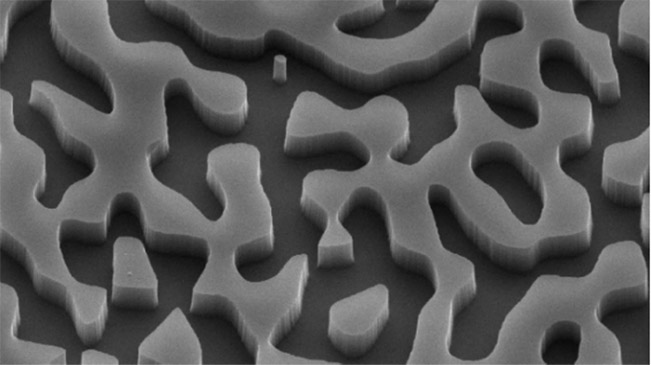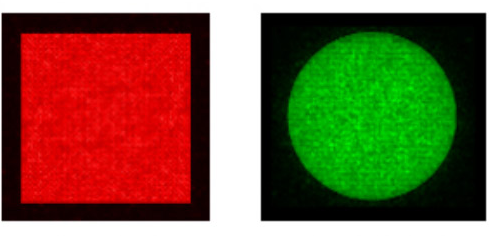Micron-nano-Optics
Overview of DOE diffractive optics information
A diffractive optical element (DOE), also known as a diffractive optical lens or computer-generated hologram (CGH), is an optical component that uses the wavering properties of light to achieve its function.
Typically, a DOE is a micro-relief structure on the surface of an optical window with a structure that diffracts light in a pre-designed pattern. Adjusting the height of these microstructures creates the desired phase delay for a particular design wavelength. Therefore, DOEs are often designed to perform specific optical functions at specific wavelengths, i.e. laser systems for monochromatic light. The figure below shows the physical electron microscopy diagram of a DOE product produced based on the nanoimprint process.

Advantages of DOE diffractive optics
DOEs are used in a variety of applications to perform complex mathematical functions on the phase of the input beam to produce output beams of various shapes and structures to improve system performance. According to different uses, DOE can usually be divided into beam shaping, beam splitting, structured light, multifocal, and other special beam generation; Each category has different principles, designs and application characteristics.
Diffractive beam splitter (dot matrix beam splitter) is one of the most basic diffractive optical elements, which can generate multiple beams with similar characteristics to the input beam and have a predetermined distance between each other, its function is to divide a single incident light into several or more beams, and each beam of light has the characteristics of the original beam (except for its power and propagation angle changes, does not change the diameter, divergence angle and wavefront distribution of the initial beam). The output of the beam splitter can be a one-dimensional arrangement or a two-dimensional arrangement, and the arrangement can be completely customized by the user, which is achieved by designing the diffraction pattern on the surface of the beam splitter. At the same time, the number of output beams, the angle between the beams, the length and number of straight lines can be arbitrarily customized. Includes a one-dimensional beam array (1×N) or a matrix of two-dimensional beams (M×N). Typical applications for beam splitters include: laser scribbling, laser perforation, medical/aesthetic applications, 3D sensing and projection.

There are also diffractive beam shapers or diffraction diffusers for generating a flat top distribution of the beam, which operate with a sharp "drop" of energy outside the flat area of the spot, which is designed to guarantee the exact energy level of the required threshold so that no energy is wasted. Flat top diffractive beam shapers are typically used in high power material processing applications where energy cost is an important component and high precision processing is required.
A beam homogenizer (diffuser) converts any collimated input beam into an output beam with uniform intensity. Works at any wavelength and in any shape. Beam homogenizers are useful in many applications where a clearly defined beam shape and a random distribution of intensity distribution are required. Beam homogenizers have advantages over single-mode lasers in the use of multimode laser beams, and their lower coherence will reduce the visibility of spots, so that the intensity of the output light is more uniform.

In addition to the above products, there are others
TOP